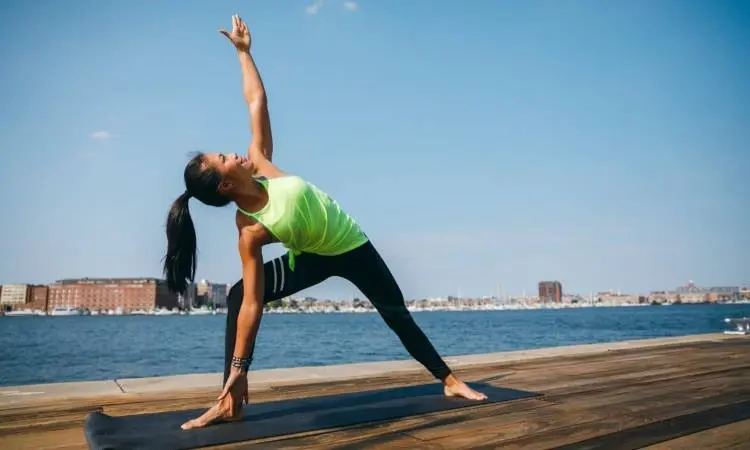Yoga is a transformative practice that encompasses physical postures, breathwork, mindfulness, and spiritual growth. At the heart of this ancient practice are a variety of foundational poses that form the building blocks for a well-rounded yoga practice. These basic yoga poses provide a strong foundation for strength, flexibility, balance, and body awareness. In this article, we will delve into a selection of essential basic yoga poses, exploring their benefits, alignment principles, and the profound impact they can have on your overall well-being.
Mountain Pose (Tadasana)
The Mountain Pose stands as the cornerstone of all standing yoga poses, embodying essential principles of alignment, grounding, and body awareness. To assume this foundational position, stand with your feet hip-width apart, maintaining a tall spine while allowing your arms to gently rest at your sides. By practicing Mountain Pose, you can enhance your posture, fortify your legs and core, and foster a profound sense of stability and mindfulness.
Downward Facing Dog (Adho Mukha Svanasana)
Downward Facing Dog has gained significant popularity as a pose that offers a comprehensive body stretch and revitalizes the mind. To assume this position, start by positioning yourself on all fours, with your hands shoulder-width apart and your knees hip-width apart. Gradually apply pressure through your hands as you lift your hips upward, creating an elegant inverted V shape. This posture effectively elongates the spine and provides gentle stretching for the hamstrings, calves, and shoulders, all while fortifying the upper body.
Warrior I (Virabhadrasana I)
From Mountain Pose, step one foot back, ensuring the front foot is facing forward, and bend the front knee. Extend the arms overhead, with the gaze forward. Warrior I strengthens the legs, opens the hips, and cultivates a sense of determination and confidence.
Tree Pose (Vrksasana)
Tree Pose is a balancing pose that promotes focus, stability, and connection to nature. Stand tall with feet grounded, shift the weight onto one leg, and place the sole of the opposite foot on the inner thigh or calf (avoid placing it on the knee). Bring the hands to the heart center or extend them overhead. Tree Pose improves balance, strengthens the legs, and enhances concentration.
Bridge Pose (Setu Bandhasana)
Bridge Pose is a gentle backbend that opens the chest, stretches the spine, and strengthens the legs and glutes. Press through the feet, lift the hips, and interlace the fingers underneath the body. Bridge Pose stimulates the thyroid gland, improves digestion, and energizes the body.
Child’s Pose (Balasana)
Child’s Pose is a resting pose that promotes relaxation, surrender, and introspection. Begin on all fours, then sit back onto the heels and fold the torso forward, resting the forehead on the mat. Extend the arms forward or rest them alongside the body. Child’s Pose releases tension in the back, shoulders, and hips, calms the mind, and aids in digestion.
Corpse Pose (Savasana)
Corpse Pose is the final relaxation pose in yoga practice, allowing for integration and deep rest. Close the eyes and consciously relax each part of the body. Corpse Pose promotes deep relaxation, reduces stress, and supports mental and emotional well-being.
Conclusion
Basic yoga poses serve as the foundation for a well-rounded yoga practice, providing strength, flexibility, balance, and inner awareness. As you explore these foundational poses, remember to listen to your body, honor its limitations, and find a balance between effort and ease. With regular practice, these basic poses will not only enhance your physical well-being but also nurture your mind and spirit. Embrace the journey of yoga and let these foundational poses guide you towards a state of holistic well-being.

